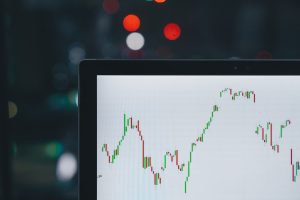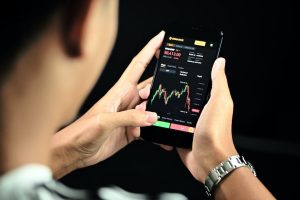Forex trading is a complex and ever-changing market that requires traders to have a deep understanding of various aspects of trading, including account leverage. Account leverage is a crucial concept in forex trading that determines the amount of money a trader can borrow from a broker to open a position. In simpler terms, account leverage is the ratio of the trader’s funds to the size of the position they are holding.
Account leverage is an essential tool for forex traders, as it allows them to control large positions with minimal capital. However, it is important to note that account leverage can magnify both profits and losses, making it a risky tool for inexperienced traders. In this article, we will take a closer look at what account leverage is, how it works, and the benefits and risks associated with it.
What is account leverage?
Account leverage is the amount of money a trader can borrow from a broker to open a position. In forex trading, leverage is expressed as a ratio, such as 1:100 or 1:500. This means that for every $1 of the trader’s capital, the broker will lend them $100 or $500, respectively. The higher the leverage ratio, the greater the amount of money a trader can control with a smaller amount of capital.
For example, if a trader has $1,000 in their account and the broker offers a leverage ratio of 1:100, the trader can control a position worth $100,000. If the broker offers a leverage ratio of 1:500, the trader can control a position worth $500,000. This means that with a smaller amount of capital, the trader can make larger trades and potentially earn larger profits.
How does account leverage work?
Account leverage works by allowing traders to control larger positions than their account balance would normally allow. When a trader opens a position, they are required to put up a certain amount of margin, which is a percentage of the position’s value. The margin is the trader’s own money, and the broker uses it as collateral against any losses the trader may incur.
The amount of margin required depends on the leverage ratio and the size of the position. For example, if a trader wants to open a position worth $100,000 with a leverage ratio of 1:100, they would need to put up $1,000 in margin. If they wanted to open the same position with a leverage ratio of 1:500, they would only need to put up $200 in margin.
If the trade goes in the trader’s favor, the profit is calculated based on the full size of the position. However, if the trade goes against the trader, the losses are also calculated based on the full size of the position. This means that a higher leverage ratio can magnify both profits and losses, making it a risky tool for inexperienced traders.
Benefits of account leverage
The main benefit of account leverage is that it allows traders to control larger positions with a smaller amount of capital. This means that traders can potentially earn larger profits than they would be able to with their own funds. Additionally, account leverage can provide traders with more flexibility and the ability to take advantage of short-term price movements.
Another benefit of account leverage is that it allows traders to diversify their portfolio and spread their risk across multiple positions. This can help to reduce the impact of any single trade on their overall portfolio and minimize potential losses.
Risks of account leverage
The main risk of account leverage is that it can magnify both profits and losses, making it a risky tool for inexperienced traders. If a trade goes against the trader, the losses can quickly exceed the amount of margin they have put up, potentially leading to a margin call and the loss of their entire account balance.
Another risk of account leverage is that it can lead to overtrading and emotional decision-making. When a trader has access to a large amount of leverage, they may be tempted to take on more risk than they can handle, leading to impulsive trading decisions and potentially large losses.
Conclusion
In conclusion, account leverage is a crucial concept in forex trading that allows traders to control larger positions with a smaller amount of capital. However, it is important to understand the risks associated with account leverage and use it responsibly. Traders should always have a solid understanding of the market and their own risk tolerance before using account leverage to open positions. By using account leverage wisely, traders can potentially earn larger profits and diversify their portfolio, while minimizing the impact of potential losses.





